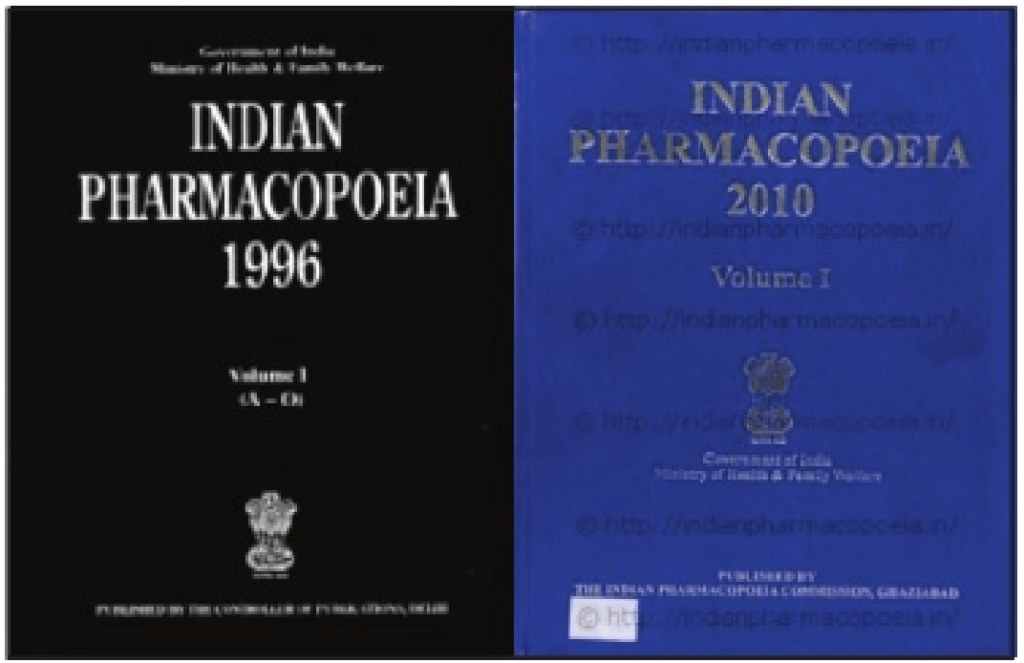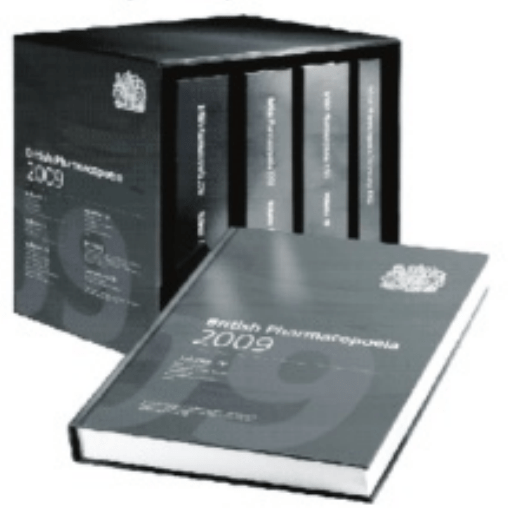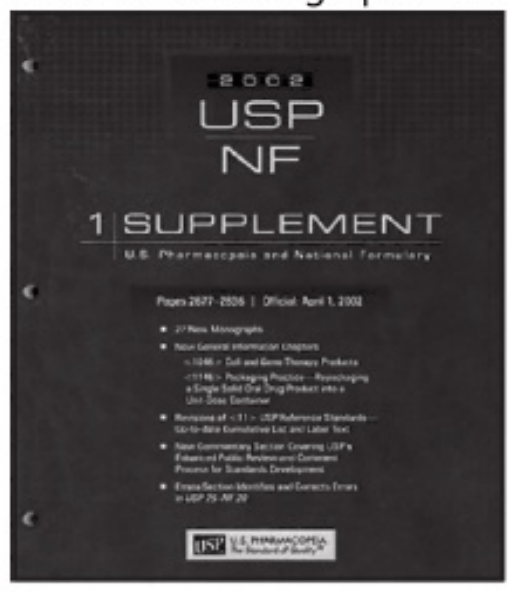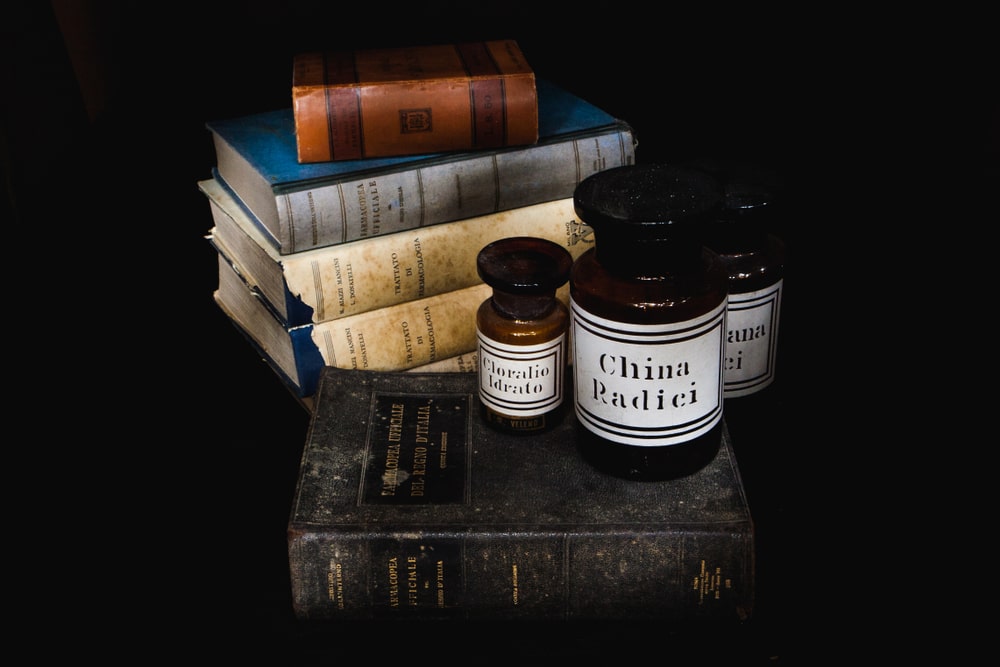Pharmacopoeia is Derived from the Greek words ‘Pharmakon’ means drug and ‘Poeia’ means to make. The books containing the standards for drugs and other related substances are known as pharmacopoeias and formularies. Collectively these books are known as Drug Compendia.
The pharmacopoeias contain a list of drugs and other related substances regarding their source, descriptions, tests, formulae for preparing the same, action and uses, doses, storage conditions etc.
It is a legal and official book issued by recognized authorities usually appointed by the Government of each country. These books are revised from time to time to introduce the latest information available as early as possible after they become established.

Table of Contents
Classification of pharmacopeia
The drug compendia are classified as:
- Official compendia.
- Non-official compendia
Official compendia:
Official compendia are the compilation of drugs and other related substances which are recognized as legal standards of purity, quality and strength by a government agency of respective countries of their origin. Official compendia include:
- British Pharmacopoeia.
- British Pharmaceutical Codex.
- Indian Pharmacopoeia.
- United States Pharmacopoeia.
- National Formulary
Non-official compendia:
The books other than official drug compendia which are used as secondary reference sources for drugs and other related substances are known as non-official drug compendia. These include:
- Merck Index.
- Remington’s Pharmaceutical Sciences.
- The United States Dispensary.
Indian Pharmacopoeia
The development of IP was started to promote public health by bringing out authoritative and officially accepted standards for the quality of drugs including active pharmaceutical ingredients, excipients, dosage forms and medical devices for use by health professionals, patients and consumers.
- In pre-independence days, British Pharmacopoeia was used in India.
- In 1946 Government of India issued one list known as ‘The Indian Pharmacopoeial list’ which was used as a supplement to British Pharmacopoeia.
- A committee under the chairmanship of Sir R. N. Chopra along with other nine members prepared ‘The Indian Pharmacopoeial list’.
- It was prepared by the Department of Health, Government of India, Delhi in 1946.
- In 1948 Government of India appointed an Indian Pharmacopoeia committee for preparing ‘Pharmacopoeia of India’.
- The tenure of this committee was five years.
In 1955 first edition of the Indian Pharmacopoeia committee under the chairmanship of Dr B. N. Ghosh was published.
- It is written in English and official titles of monographs are given in Latin.
- 1960 – Supplement to this edition was published.
In 1966 Second edition of IP was published under the chairmanship of Dr B. Mukherji.
- Official titles of monographs are given in English.
- Doses were expressed in the Metric system.
- Formulations of the drugs were given immediately after the monograph of drugs.
- 1975 – Supplement to this edition was published.
In 1985, the third edition of IP was published with two volumes and nine appendices.
- 261 new monographs have been added.
- Addendum I to IP was published in 1989 where 46 new monographs were added and 126 amended.
- Addendum II was published in 1991 where 62 new monographs were added and 110 amended.
In 1996 Fourth edition of IP was published under the chairmanship of Dr Nityanand.
- It has been made effective from 1st December 1996.
- It covered 1149 monographs and 123 appendices.
- It includes 294 new monographs and 110 monographs have been deleted.
- Addendum I has been made effective from 31st December 2000 where 42 new monographs have been added.
- Addendum II has been made effective from 30th June 2003 where 19 new monographs have been added.
- The veterinary supplement to IP 1996 contains 208 monographs and four appendices.
In 2007, the fifth edition of IP was published and an addendum to this edition was published in 2008.
- IP 2007 is presented in three volumes.
- Volume one contains general notices and general chapters.
- Volume two and three contains general monographs on drug substances, dosage forms and pharmaceutical aids.
In 2010, the sixth edition of IP was published.
- The 6th edition of the Indian Pharmacopoeia 2010 is published by the Indian Pharmacopoeia Commission (IPC), Ghaziabad.
- This edition was effective from 1st September 2010.
- The Indian Pharmacopoeia 2010 is presented in three volumes.
- Volume I contains the Notices, Preface, the Structure of the IPC, Acknowledgements, Introduction, and the General Chapters.
- Volume II contains the General Notice, General Monographs on Dosage Forms and Monographs on drug substances, dosage forms and pharmaceutical aids (A to M).
- Volume III contains Monographs on drug substances, dosage forms and pharmaceutical aids (N to Z).
- Monographs on Vaccines and Immunosera Human use, Herbs Herbal products, Blood and blood-related products, Biotechnology products and Veterinary products.
- The number of monographs of Excipients, Anticancer drugs, Herbal products and antiretroviral drugs has been increased in this edition.
- A chapter on NMR and a chapter on microbial contamination were also updated.
In 2014, the seventh edition of Indian Pharmacopoeia was published.
- The seventh edition of the Indian Pharmacopoeia (IP 2014) is published by the Indian Pharmacopoeia Commission (IPC) on behalf of the Government of India, Ministry of Health and Family Welfare by Ghulam Nabi Azad.
- The Indian Pharmacopoeia 2014 is presented in four volumes.
- The scope of Pharmacopoeia has been extended to include additional anticancer drugs and antiretroviral drugs and formulations, products of biotechnology, indigenous herbs and herbal products, veterinary vaccines.
- The IP 2014 incorporates 2550 monographs of drugs out of which 577 are new monographs consisting of APIs, excipients, dosage forms and herbal products etc.

British Pharmacopeia
- The First edition of BP was published in 1864.
- It consists of two sections:
- Part I: Materia Medica and
- Part II: Preparation and compounding.
- The second edition of BP was published in 1867.
- The third edition of BP was published in 1884.
- The fourth edition of BP was published in 1898.
- The Next edition of BP was published in 1914.
- The Next edition of BP was published in 1953.
- In this edition titles of drugs and preparations were in English instead of Latin and metric system.
- It has been published annually.
- In BP 2007 monographs has been introduced for material specifically used in the preparation of Traditional Chinese medicines.
- BP 2008 contains approximately 3100 monographs for substances, preparations and articles used in practice.
- It has been made effective from 1st January 2008.
- BP 2007, 2008, 2009 were given in six volumes i.e. volume I to volume VI.
- Volume I and II contains medicinal substances.
- Volume III contains formulated preparations, blood-related products, immunological products, radiopharmaceutical preparations, surgical materials and homoeopathic preparations.
- Volume IV contains supplementary chapters, IR spectra etc. Volume V contains veterinary.
- Volume VI contains a CD ROM version.
The British Pharmacopoeia 2010
- Medicines and Healthcare products Regulatory Agency (MHRA), has published the British Pharmacopoeia (BP) 2010.
- The British Pharmacopoeia (BP) is the official collection of standards for UK medicinal products and pharmaceutical substances. Published annually the BP contains monographs for pharmaceutical substances, formulated preparations and other articles used in the practice of medicine.
- The standards in the BP 2010 are legally effective in the UK from 1st January 2010.
- The BP has been providing authoritative, official standards for pharmaceutical substances and medicinal products since 1864. Today, it is used in almost 100 countries worldwide and remains an essential reference.
New to the British Pharmacopoeia 2010
- 40 monographs for formulated preparations, including veterinary medicines and standards used for unlicensed formulations.
- BP contains new and revised monographs for herbal medicinal products and homoeopathic stocks and mother tinctures.
- The BP 2010 comprises four volumes of the BP 2010 and a single volume of the BP (Veterinary) 2010.
The British Pharmacopoeia 2013
- Six volume printed edition including the BP (Veterinary) 2013
New for British Pharmacopoeia 2013
- 41 new BP monographs.
- 40 new European Pharmacopoeia monographs.
- 619 amended monographs.
- 6 new and 1 amended Infrared Reference Spectra.
The British Pharmacopoeia 2014
- The only official source of British pharmaceutical standards.
- Produced by the British Pharmacopoeia Commission Secretariat of the Medicines and Healthcare Products Regulatory Agency (MHRA), and updated annually.
- The 2014 edition includes almost 3500 monographs which are legally enforced by the Human Medicines Regulations 2012.
- The BP 2014 has five volumes of the British Pharmacopoeia 2014 and a single volume of the British Pharmacopoeia (Veterinary) 2014, along with a fully searchable CD-ROM and online access.
New for British Pharmacopoeia 2014
- Legally effective from 1 January 2014.
- 40 new BP monographs. 272 amended monographs.
- Three new Supplementary Chapters.
- Four new BP (Vet) monographs.
- One new BP (Vet) Supplementary Chapter.

United State Pharmacopoeia
The United States Pharmacopoeia and National Formulary (USP-NF) is an official public standards-setting authority for all prescription and over-the-counter medicines and other health care products manufactured or sold in the United States.
USP also sets recognized standards for food ingredients and dietary supplements. These standards help to ensure the quality, purity, strength, and consistency of products made for public consumption.
USP’s standards are recognized and used in more than 130 countries around the globe. USP’s work is aided by the participation and oversight of volunteers representing pharmacy, medicine, and other health care professions as well as academia, government, the pharmaceutical and food industries, health plans, and consumer organizations.
The United States Pharmacopoeia was originally published in 1820 under the authority of the United States Pharmacopoeial Convention and the National Formulary was published in 1888 under the guidance of the American Pharmaceutical Association.
In 1974 the National Formulary was purchased by the United States Pharmacopoeial Convention and from 1980 onwards only one official book of drug standards was published under the heading, The United States Pharmacopoeia and The National Formulary (USP-NF).
The United States Pharmacopoeia-National Formulary (USP-NF) 2009 is a book of public pharmacopoeial standards.
It contains standards for medicines, dosage forms, drug substances, excipients, medical devices, and dietary supplements.
USP-NF in English is available in print, online, and CD formats. The USP-NF is a three-volume combination of two official compendia, the United States.
Pharmacopoeia (USP) and the National Formulary (NF)
Monographs for drug substances and preparations are featured in the USP.
Monographs for dietary supplements and ingredients appear in a separate section of the USP.
Excipient monographs are in the NF.
A monograph includes the name of the ingredient or preparation; the definition; packaging, storage, and labelling requirements; and the specification.
The specification consists of a series of tests, procedures for the tests, and acceptance criteria. These tests and procedures require the use of official USP Reference Standards.
Medicinal ingredients and products will have the stipulated strength, quality, and purity if they conform to the requirements of the monograph and relevant general chapters.

Extra Pharmacopoeia
The Extra Pharmacopoeia was first produced in 1883 by William Martindale and is still known as “Martindale”. This is an authorized reference book on drugs and is used throughout the world.
It provides all sorts of the latest information on drugs and medicines. The Extra Pharmacopoeia is prepared by consulting the pharmacopoeias of other countries.
The twenty-eighth edition was published in December 1982.
The twenty-ninth edition was published in January 1989, by the direction of the council of The Royal Pharmaceutical Society of Great Britain and prepared in the Society’s Department of Pharmaceutical Sciences.
Martindale contains information on drugs in clinical use worldwide, as well as selected investigational and veterinary drugs, herbal and complementary medicines, pharmaceutical excipients, vitamins and nutritional agents, vaccines, radiopharmaceuticals, contrast media and diagnostic agents, medicinal gases, drugs of abuse and recreational drugs, toxic substances, disinfectants and pesticides.
Make sure you also check our other amazing Article on : Powders
